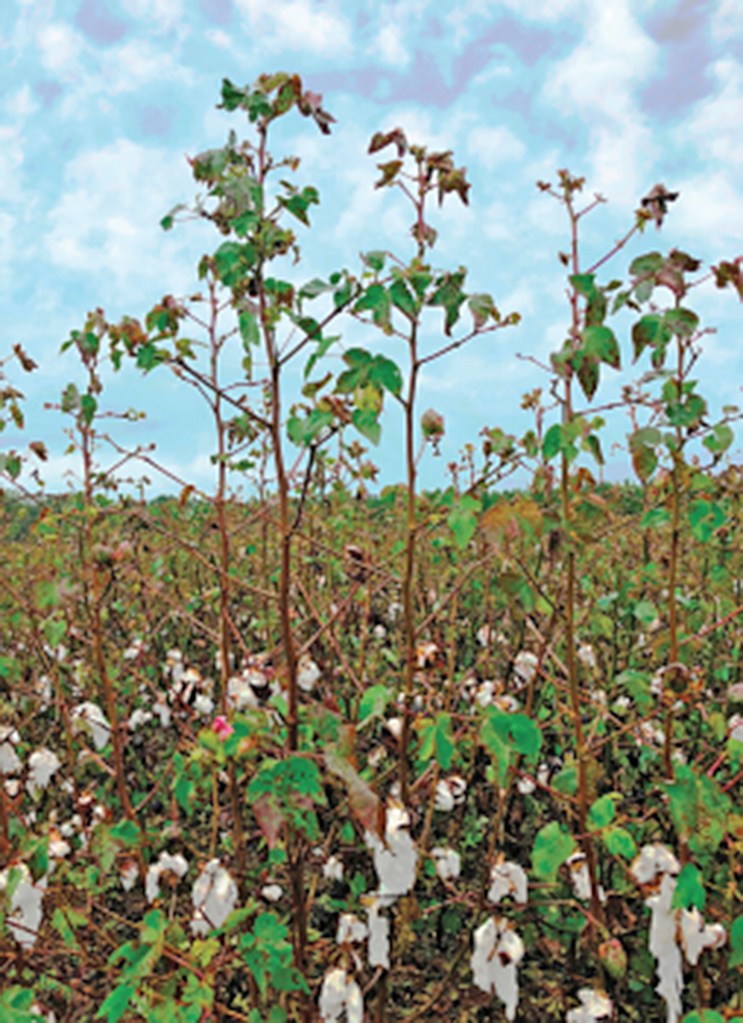Ag groups monitoring cotton virus
Published 6:15 am Friday, July 12, 2019

- Symptoms of cotton leaf roll dwarf virus include shortened internodes, leaf rolling, leaf petiole and vein reddening, reduced flower and boil size, distorted juvenile leaves and sterility.
State agricultural experts are closely watching a a new strain of cotton blue disease that reduced yields in 2018, according to the Alabama Farmers Federation.
Cotton leaf roll dwarf virus (CLRDV-AL) diminishes blooms and bolls in the upper canopy, resulting in lower yields — particularly in late-planted cotton, according to the Alabama Cooperative Extension System.
Trending
An information sheet released by ACES notes the virus was found in Limestone County, but Alabama Cooperative Extension Specialist Tyler Sandlin said farmers shouldn’t worry. The sample tested by Auburn University’s Plant Diagnostic Lab was from cotton that was already harvested and wasn’t in season.
“(The virus) is more isolated to South Alabama, and there have so far been no impacts anywhere in North Alabama,” Sandlin said. “I don’t think it’s on a lot of people’s radar, but that’s not to say we’re not keeping our eyes open.”
Brazil is experiencing a similar virus, and losses of up to 80% have been reported for susceptible cultivars. In 2017, the yield loss to the CLRDV-AL was estimated at $19 million. The virus resulted in reduced yields by nearly 50,000 bales in 2018, according to the AFF.
Symptoms and causes
According to ACES, infected plants exhibit stunting due to shortened internodes, leaf rolling, leaf petiole and vein reddening, reduced flower and boil size, distorted juvenile leaves and sterility.
“The most obvious sign that aphids spread CLRDV-AL to your field is a reduction in bolls,” said Carla Hornady, the AFF’s Cotton Division director. “However, farmers should stay vigilant and look for early symptoms like red leaf veins and cupped leaves. Severely damaged plants also grow taller and may look healthy from far away.”
Trending
The virus is transmitted by the cotton aphid. Alates can transmit the virus in as little as 40 seconds, and viruliferous aphids can transmit up to 12 days.
Sandlin explained farmers may see aphids on their crops, but it doesn’t mean they are carrying CLRDV-AL. ACES said whiteflies, which have become a pest in Georgia cotton, do not transmit CLRDV or related poleroviruses.
Control
The ACES fact sheet explained intensive insecticide programs directed at aphids won’t result in a reduction of the virus spreading to fields when aphids initially colonize the crop, because insecticides won’t kill aphid vectors before they can transmit the virus.
One way to fight the virus could be to simply adjust planting schedules. The virus has been most prevalent in crops planted late in the season.
“As a result, cotton in areas of Alabama at high risk for infection should be planted in early to mid-May,” according to ACES. “Early planing, which may increase the occurrence of boil rot and hardlock in South Alabama, has previously been recommended as a tool for managing CLRDV.”
Hornady said the best defense against CLRDV-AL will be new, resistant cotton cultivars, which could take years to develop, test and get to market. Report signs of CLRDV-AL to your local Extension agent or contact Hornady at chornady@alfafarmers.org.





